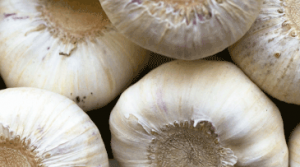4-O-Methylhonokiol (M184770) is isolated from the bark of Magnolia officinalis along with the natural products honokiol and magnolol. This lignan has found utility in a range of research fields, from neuroscience to cancer.
Researchers have found that 4-O-Methylhonokiol can act as a neuroprotective agent, potentially by acting as an acetylcholinesterase inhibitor in mice. In a Morris water maze assay, after scopoloamine treatment to induce memory impairment, mice that received 4-O-Methylhonokiol performed better with reduced escape latency time compared with control mice. This was found in conjunction with suppressed acetylcholinesterase activity in mouse hippocampus and cortex with 4-O-Methylhonokiol treatment.
A similar study showed that 4-O-Methylhonokiol decreases the effect of LPS (lipopolysaccharides)-induced memory impairment in mice. In a Morris water maze experiment, mice performed better after LPS injection when treated with 4-O-Methylhonokiol, compared to control. Further experiments showed that 4-O-Methylhonokiol does this by inhibiting NF-κB, which in turn decreased the expression of Aβ1-42 in mouse brains. Additionally, 4-O-Methylhonokiol reduced expression of nitric oxide and PGE2, which are over-expressed in LPS-treated mice models.
More neuroprotective studies of 4-O-Methylhonokiol have shown that it increases the amount of 2-arachidonyl glycerol in mice brain by activating cannabinoid type-2 receptor (CB2), and acting as a substrate-specific inhibitor of COX-2. The inhibtion of COX-2 was shown by a decrease in the presence of PGE2 in mouse brain. This dual activity could allow for beneficial effects in neuroinflammatory states with over-expressed CB2 and COX-2 proteins.
In addition to neuroprotective studies, 4-O-methylhonokiol also has activity as an anti-cancer compound, as well as other disease states. 4-O-Methylhonokiol (M184770) is now available from LKT Laboratories, Inc. in 5, 10, 25, and 100 mg size bottles.
Lee, Y. K., Yuk, D. Y. et al. “Protective effect of the ethanol extract of Magnolia officinalis and 4-O-methylhonokiol on scopolamine-induced memory impairment and the inhibition of acetylchlinesterase activity” J Nat Med. 2009 Jul; 63(3):274-282 PMID: 19343477
Lee, Y.J., Choi, D.Y. et al. “Inhibitory effect of 4-O-methylhonokiol on lipopolysaccharide-induced neuroinflammation, amyloidogenesis and memory impairment via inhibition of nuclear factor-kappaB in vitro and in vivo models” J Neuroinflammation. 2012 Feb 19;9:35 PMID: 22339795
Chicca, A. Gachet, M.S. et al. “4’-O-methylhonokiol increases levels of 2-arachidonoyl glycerol in mouse brain via selective inhibition of its COX-2-mediated oxygenation” J Neuroinflammation. 2015 May 13; 12:89 PMID: 25962384

 Triple-negative breast cancer (TNBC), so named for its lack of expression of the genes for estrogen receptor, progesterone receptor, and Her2/neu, is a breast cancer subtype with a poor prognosis that is difficult to treat. Sulforaphane, an abundant dietary component found in broccoli, has been shown to inhibit cell proliferation and sphere formation of the cancer stem cell population in TNBC cells.
Triple-negative breast cancer (TNBC), so named for its lack of expression of the genes for estrogen receptor, progesterone receptor, and Her2/neu, is a breast cancer subtype with a poor prognosis that is difficult to treat. Sulforaphane, an abundant dietary component found in broccoli, has been shown to inhibit cell proliferation and sphere formation of the cancer stem cell population in TNBC cells.
 Sulfur-containing compounds isolated from garlic, known for their anti-inflammatory properties, are exhibiting chemopreventive effects in recent research by the National Cancer Institute.
Sulfur-containing compounds isolated from garlic, known for their anti-inflammatory properties, are exhibiting chemopreventive effects in recent research by the National Cancer Institute.